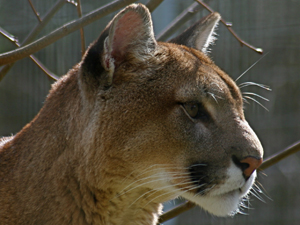Who Last Inhabited Western New York Before La Salle Arrived?
 Save for a chance meeting with French Missionaries, all we know of these people we have learned from other tribes. The Iroquois League, led by the powerful Seneca, eradicated these original inhabitants just before the Europeans entered the scene in earnest. Oddly, the victorious Seneca did not begin to settle the area until forced to by the victorious colonists following the conclusion of the Revolutionary War more than a century later. Yet, for all the mystery surrounding the first occupants of Western New York, including the fact we have almost no direct evidence of their existence, they remain the most noteworthy of all the historic tribes of our region.
Save for a chance meeting with French Missionaries, all we know of these people we have learned from other tribes. The Iroquois League, led by the powerful Seneca, eradicated these original inhabitants just before the Europeans entered the scene in earnest. Oddly, the victorious Seneca did not begin to settle the area until forced to by the victorious colonists following the conclusion of the Revolutionary War more than a century later. Yet, for all the mystery surrounding the first occupants of Western New York, including the fact we have almost no direct evidence of their existence, they remain the most noteworthy of all the historic tribes of our region.
Why? Read the answer in The Lost Tribe of Western New York.







2:52 pm
Chris:
I think there is some value in pursuing further Indian(US type) notations to this region.
Case-in-point: Ely Parker. http://en.wikipedia.org/wiki/Ely_S._Parker.
The Tonawanda Band is also unique among the Seneca; as they used some of the money they got to vacate their territory to BUY BACK some the lands that were part of their preserve.
Thus, I propose that in unison, contact is made with the Chief of the Tonawanda Band, and secure his alliance in the pursuit of unique, and overlooked factoids that should be recognized as part of the heritage of Greater Western NYS.
Interested?
Thomas J. Baglin
Ragingmt@rochester.rr.com
08-25-2012
3:04 pm
Thomas: Yes, I think that would be a great idea, especially if I decide to expand this story into a broader book on the Erie Nation or if we go ahead with a video version of the current book (in which case I’ll be looking for people to interview on camera).
One note though: I tend to avoid using wikipedia as a reference since I can’t be sure how it’s been vetted. On the other hand, wikipedia, and specifically the page you reference, often contains links to original source material. That’s the material I’d want to focus on.
Thanks!
10:57 pm
Chris: Here are some additional sites to pursue:
https://en.wikipedia.org/wiki/Little_Beard's_Town; Cuylerville, NY
https://en.wikipedia.org/wiki/Michigan; explains “Fire Peoples.”
http://ech.case.edu/cgi/article.pl?id=EI,I went through this, and find some potential error in the article.
My concern is they seem to refer to an old map, and I SUSPECT the place the map is being drawn FROM. That is what advantage TO the map story is contributed BY the location of the map drawing / PERSPECTIVE.
It IS necessary to crawl back into the 17th, and 18th centuries, and TO jettison all that modern maps show. The Pymatuning Reservoir is such an example.
In the report, I would say this current water storage area would be identified in the 17th century as the Waterford Marshes.
https://en.wikipedia.org/wiki/Erie_people.
https://en.wikipedia.org/wiki/Neutral_Nation; a necessary point of accuracy as to searching out whether the ERIE people were part of the Neutral Nations’ Confederacy. ????
https://en.wikipedia.org/wiki/Wenrohronon. I never heard of these folks before, but I would classify these as belonging TO those Iroquoian tribes, ala HURON, that did NOT JOIN the Iroquois Confederacy, at the beginning. Thus became an ENEMY of the confederation.
https://en.wikipedia.org/wiki/Seneca_people. ONLY SOURCE to mention the Seneca as being in TWO PARTS, East, and West. Almost ALL sources never mention the breakdown. The usual description is the Seneca are consigned to those inhabiting from Canandaigua Lake west to Lake Erie, and into the Niagara and lower portions of Ontario Province.
11:59 pm
Additional:
https://en.wikipedia.org/wiki/Shawnee, non-Iroquoians that were part of the fate of the Iroquois.
https://en.wikipedia.org/wiki/Mingo. My late Aunt Olga Hogan, nee Baglin; often used to tell the phrase: “Who will be left to mourn for Logan?”
https://en.wikipedia.org/wiki/Logan_%28Iroquois_leader%29.
Thomas J. Baglin
Ragingmt@rochester.rr.com
03-24-2016